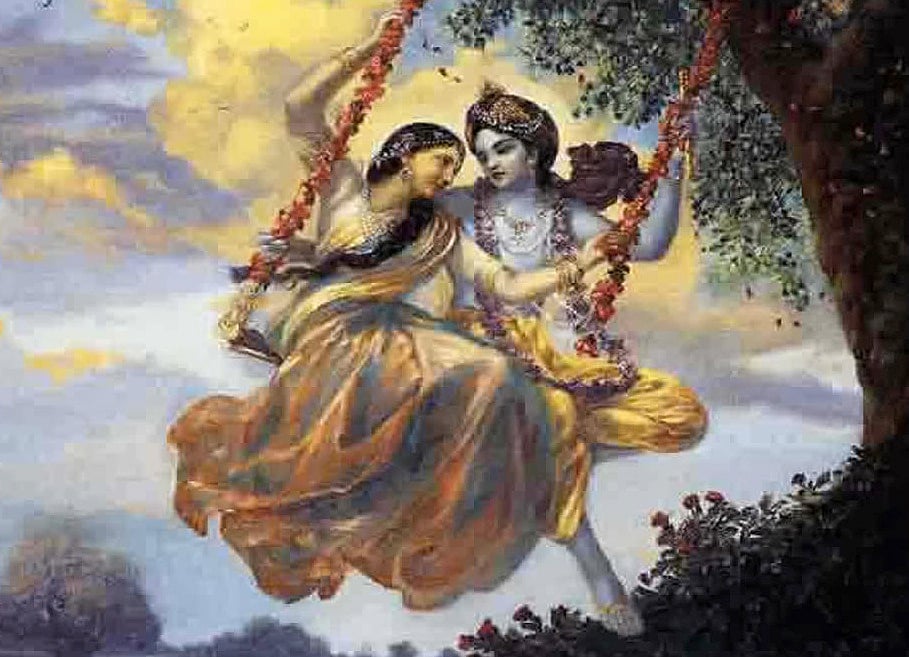
Raja: Celebrating A Woman’s Periods!
Considered one of the oldest festivals of Odisha, Raja, which coincides with the first rains of the year, is all about celebrating a woman’s power to reproduce.
Ever imagined a festival could be based on the wonders of periods (menstruation)? Let me introduce you to Raja. Raja (pronounced as Ro-jo), which derives its name from from Rajaswala (which means women in her menses), is Odisha’s oldest harvest festival that celebrates the natural miracle—periods, and finds its genesis in the ritual of the ancient tribes of Bonda, Dharua and Saora who, back in time, practiced Podu Chaso—cultivation through slash and burn.
It is said that every time the tribes would burn a new patch of forest for cultivation, they would spread the ashes on the land and let it rest till the first spell of monsoon. It was believed that the land during the time was going through a process of regeneration – essentially cleaning of any impurities and preparing the ground for new seeds to germinate, an act identified with the menstrual cycle of an unmarried girl or woman – and hence shouldn’t be disturbed.
Even an act of plucking a flower or a fruit from the tree was considered sin as it would cause pain to the earth. Of course the tribe prepared for such an event in advance, when food was gathered and kept to feed the people. Relieved of their daily chores – men from cultivating and woman from making food – the tribes resorted to the next best thing they knew to do well – merry making, dancing, decking up and usually remaining happy and high.
As the years passed, the ritual took on a more celebratory turn as tribes became dynastic. However, for a greater part of the ancient Odisha era, Raja remained a tribal ritual, who some believe originated from the tantric belief of worshipping sprinkling period blood as the life giver!
Raja’s makeover into the modern day avatar came under the Nandas, who were responsible for creating irrigation channels and cultivation methods in Odisha. It is said that Mahapadma Nanda, in an attempt to consolidate his empire, began forming Odisha then Odradesh/Kalinga, which was a prosperous trading centre, into an economic and administrative hub, given the good mix of tribes involved in trading, cultivation and cattle rearing. Mahapadma realized the importance of cultivation and adopted the ritual of Podu Chaso, giving it a civilized twist.
So instead of burning a patch of forest, Raja marked the time when the land, after being left idle for a season to have natural vegetation, was prepared for paddy cultivation. The wild weeds were razed to the ground and the land was left to be ready for tilling once its pores had been moistened with the drops of the first rain. It became a necessary practice for good crop. Of course, the fact that post the first showers, the land became more malleable to the plough was the reason for the ritual to reach modern times.
Under Mahapadma’s reign it became a festival where women folk – unmarried or otherwise – took a break from their daily routines to live the life of princess. In fact, religion and societal acceptance of this simple tribal ritual added their own two bits. One of them was to carry unmarried girls all around as they came to be seen as living symbols of mother earth. Other rites included a ban on cooking for the four days as it meant felling of a tree or two. People – even men – weren’t allowed to walk the earth barefoot as it would hurt the earth, and complete abstinence from meat was enforced.
Food, which in tribal culture included wild fruits, berries and wine, now included an interesting array of sweets and dishes that could sustain their flavour for four days. Poudo pitha and chakuli pitha are two of the oldest dishes that are still made for this festival.
By the medieval period, by which time temples had become a bigger authority in social life, the story of Raja saw an overhaul. What began as a ritual to celebrate the virtues of a period was now explained as an agriculture holiday. Mythology has it that during the time of Raja, Mother Earth or Bhudevi, who is also the consort of Lord Vishnu or Lord Jagannath undergoes menstruation for three days. And hence should be given the rest and care it deserves, which meant no activity that could hurt the earth.
In fact, unmarried girls who have periods around this time were worshipped as her avatar! Playing the swing also became an important part of the festival during this time. It is believed that often Lord Vishnu, in the avatar of Krishna, to ease the pain of the periods would put up a flower decked swing on a tree and play cards with Bhudevi sitting on the swing as the wind rocked it gently. Today every household puts a swing on the tree, decked with flowers, for their girls to enjoy the same!
The fourth day, which is called Vasumati Gadhua or ceremonial bath of Bhudevi, and is often marked with heavy showers, sees the culmination of this regeneration period. For most villages, this marks the start of yet another season of farming and for women, back to the grind after four days of merriment.
Yet the one thing that hasn’t changed over the years is the essence, which is still about the miracle called Periods.